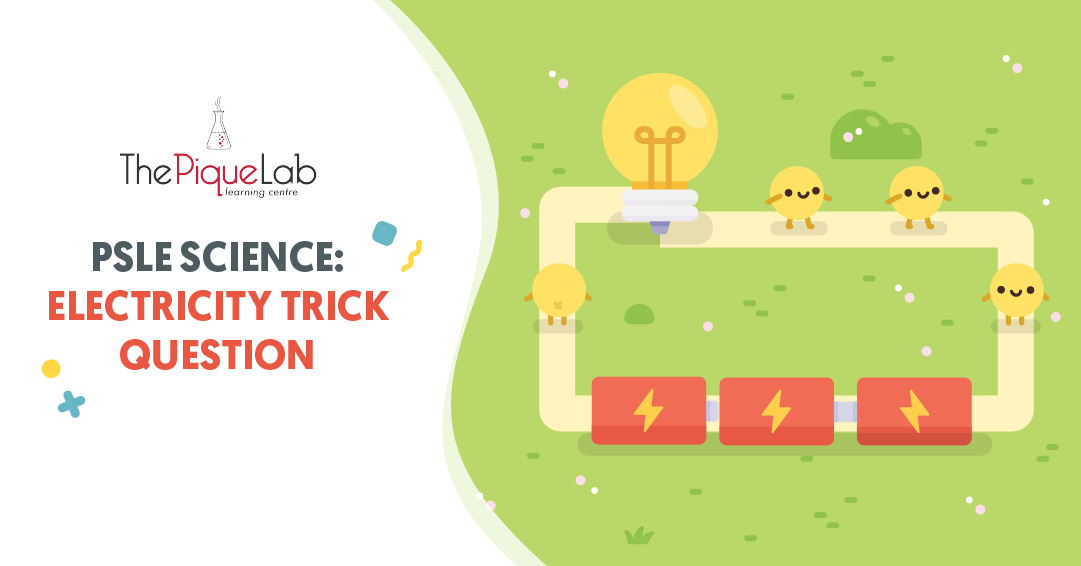Hi Mummies & Daddies! Do you struggle to understand the Achievement Level (AL) scoring system for your child’s PSLE score?
The PSLE can be a source of stress and anxiety for you and your child, especially if you are not yet familiar with the AL scoring system that determines your child’s PSLE score.
In this article, we aim to provide you with a comprehensive overview of the AL scoring system. We will delve into the details that you need to know to guide your child through this crucial examination. We hope that this article will serve as a valuable resource to help you navigate this important milestone for your child with confidence!
How do I calculate my child’s PSLE aggregate score with the AL scoring system?
Similar to the previous T-score system, the AL scoring system still measures your child’s proficiency in these four subjects:
- English Language
- Mother Tongue Language
- Mathematics
- Science
The PSLE AL scoring system has eight achievement levels, with AL 1 being the highest level and AL 8 being the lowest level.
🎯 The lower the Achievement Level, the better the score.
Just like the ‘O’ Level scoring system!
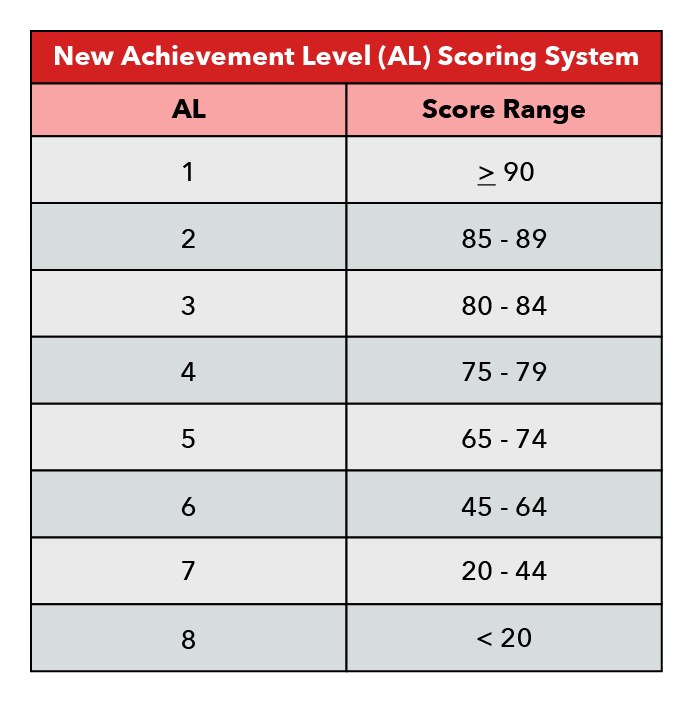
The scores for each subject are mapped to their respective ALs according to the table above. Your child’s PSLE aggregate score will be the sum of ALs for his/her four subjects.
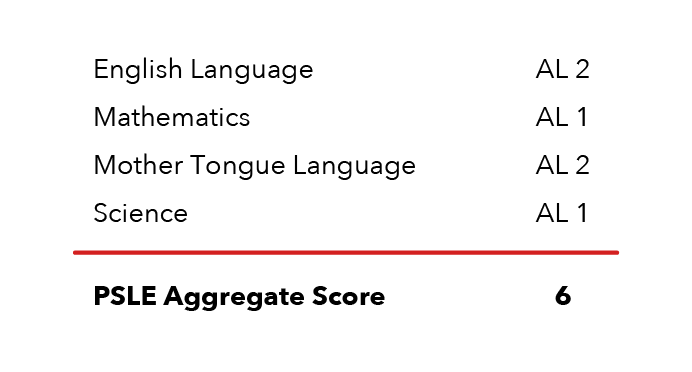
Example of a student’s PSLE aggregate score under the AL scoring PSLE system
How is the AL scoring system different from the T-score system?
You may have heard that the change in the PSLE scoring system in 2021 was intended to promote a more holistic learning environment where the emphasis lies on learning and development, and less on grades. So how does this work?
The main difference between the scoring systems is that the AL system measures a student’s level of achievement based on the learning objectives of the curriculum, while the T-score system measures a student’s performance relative to other students who took the same examination.
Different T-scores, Same AL
To help you understand the differences better, we’ll use an example of two students, Emma and Ellie.
Under the previous T-score system, Ellie would have attained a score of 239 while Emma would have attained a score of 240. This 1-mark difference encourages comparison between the two students, which may cause Ellie to feel disheartened about her lower PSLE score.
However, under the new AL scoring system, Emma and Ellie will be assigned the exact same PSLE score, with no basis for comparison!
Now you may wonder, what happens if Emma and Ellie are vying for the last available vacancy in the same secondary school? What would happen then?
There are three tie-breakers (in order of priority) that will be applied in such cases:
Citizenship
A Singapore citizen enjoys the highest priority, followed by a Singapore Permanent Resident (PR) and an international student.
Going back to the example of Emma and Ellie, what happens if both of them are Singapore citizens? The next tie-breaker that will be considered is…
School Choice Order
If Ellie indicates her preference for the school as her second choice, while Emma indicates it as her first choice, the last available vacancy will go to Emma.
Computerised Balloting
However, if both Emma and Ellie indicate their preferences as the same choice, they will go through computerised balloting to determine who will be admitted to the school.
Evaluated For One’s Performance, Not Relative Performance
The previous T-score system was an example of bell curve grading where a student’s PSLE aggregate score is dependent on not just his/her raw score for all four subjects.
A student’s aggregate PSLE score under the T-score system is computed with a statistical formula of 3 main variables:
- A student’s raw score for each subject
- The cohort’s average raw score
- The standard deviation of the cohort score around the average score
In other words, a student’s T-score depends on how his/her cohort fares that year — instead of being an accurate reflection of his/her mastery of the PSLE key concepts and skills!
Now under the AL scoring system, your child’s PSLE score provides a more nuanced assessment of his/her academic competency as it is not subjected to how his/her cohort fares. This aims to promote a healthier learning environment where your child can focus more on identifying his/her strengths, weaknesses and learning progress.
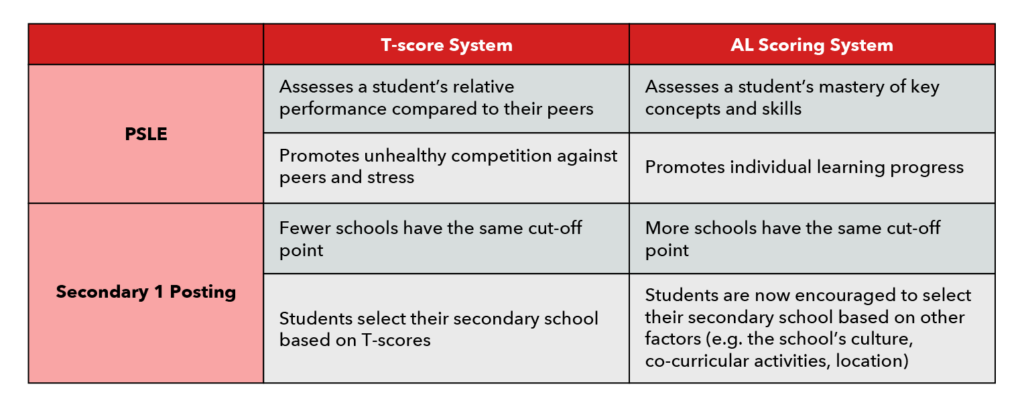
Key differences between the T-score and AL scoring systems
How does the AL scoring system affect my child? Do my child’s grades still matter?
The main difference between the T-score and AL scoring systems is how the scores are calculated and presented, but the content and format of the PSLE examination itself remain largely unchanged.
However, our PSLE Science Specialists have noted that there is an increasing number of application questions in Science examination papers over the years. This means that Science examination questions often test scenarios that are not commonly found in Science textbooks and rote memorisation cannot guarantee your child’s success in securing a high AL score for PSLE Science!
Instead, your child must be able to demonstrate his/her ability to think critically and connect the dots between Science concepts across different topics.
As such, the PSLE still remains a useful assessment of your child’s understanding of key concepts and skills. It also guides you and your child in choosing a suitable academic programme and secondary school that best supports your child’s learning needs and aspirations after the PSLE. In essence, your child’s grades still matter!
🚀 The key to doing well in the PSLE remains the same regardless of the scoring system: your child should focus on understanding the material, practising examination questions consistently and managing his/her time effectively during the preparation and examination.
How can The Pique Lab help my child attain a better AL score in PSLE Science?
At The Pique Lab, we nurture our students’ love for learning Science by teaching them how to think and develop a true appreciation for the subject. These are the top four reasons why our parents partner with us in their child’s PSLE Science learning journey:
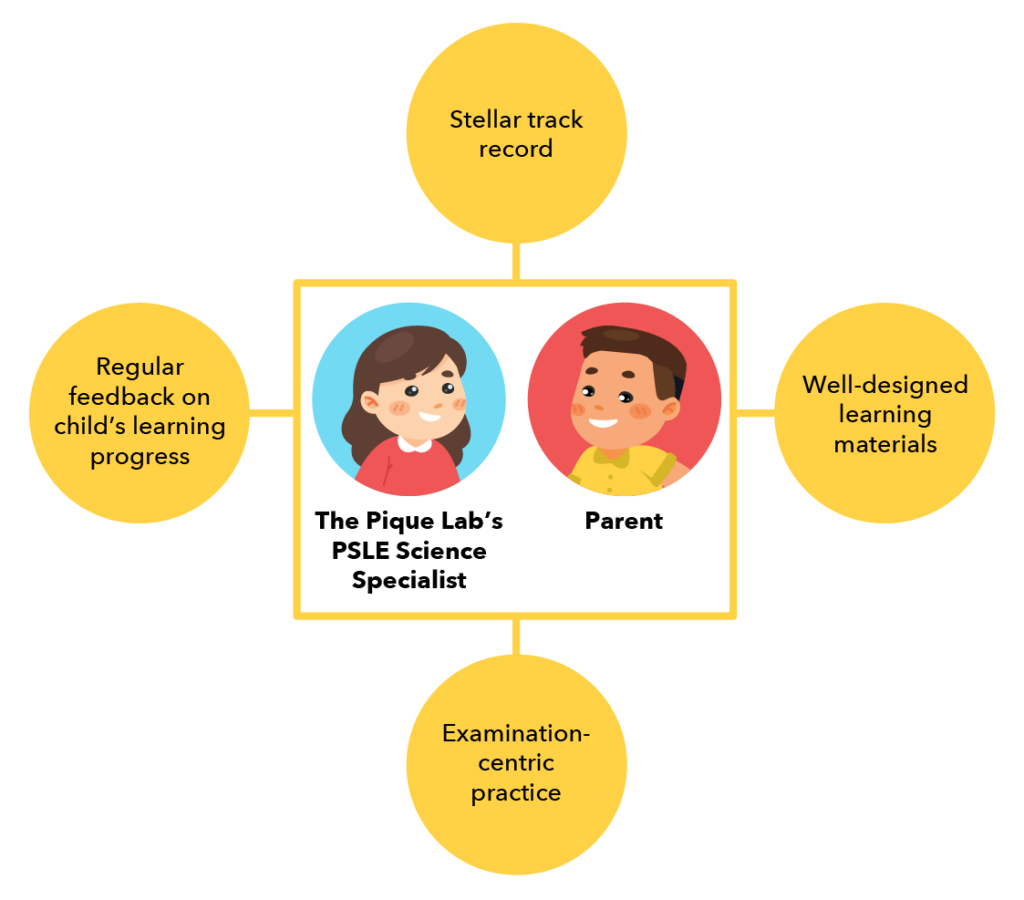
Stellar Track Record
Our 2022 distinction rate (AL1 – AL4) is 84.6%, which is a notable increase from 82.89% in 2021! This would not have been possible without the dedication of our experienced PSLE Science Specialists. They are often known to be charismatic and knowledgeable in helping our students develop clear thought processes to handle Science examination questions confidently and connect what they learn to their everyday life.
Well-designed Learning Materials
Over the past 10 years, our colourful, visually-appealing notes have helped more than 20,000 students master useful answering structures, keywords/key phrases before their Science examinations… while keeping them engaged at the same time!

Example of the topical coloured notes your child will receive during the regular classes and short-term workshops!
Examination-Focused Practice
As mentioned earlier, there is an increasing number of application questions surfacing in the PSLE Science examinations.
At The Pique Lab, our students “learn and apply” — regardless of whether they attend our regular classes and short-term workshops. By providing our students with plenty of opportunities to practice answering past-year questions, they can familiarise themselves with the format and style of the PSLE Science examination, and build their confidence in their ability to answer Science questions effectively.
Regular Feedback On Learning Progress
To help our students and their parents achieve their desired AL scores, we recognise that parents like yourself play an important role as well! At The Pique Lab, we will work hand-in-hand with you by providing appropriate suggestions on how your child can improve based on your child’s in-class exercises, homework and sporadic diagnostic assessments done during our regular classes.
Conclusion
We hope that this article has provided you with a clearer understanding of the PSLE AL scoring system. While the PSLE may be a challenging time for your child and yourself, we want to assure you that with the right preparation, guidance, and mindset, your child can excel in the PSLE and beyond! 😊

If you like our methodology, we've some upcoming workshops:


